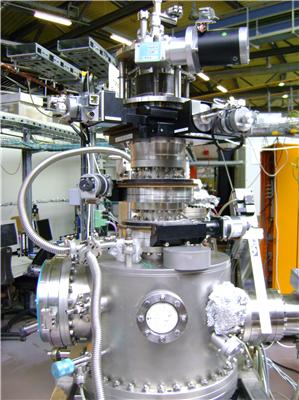A research team led by Prof. Dr. Hartmut Zabel of Ruhr-Universitaet-Bochum (RUB) has for the first time experimentally confirmed the spin pumping effect, an important physical phenomenon, in magnetic layers.
 ALICE test chamber built by RUB physicists in Berlin
ALICE test chamber built by RUB physicists in Berlin
The RUB research team has conducted the study in the ALICE test chamber constructed by the university physicists in Berlin. The team has successfully measured the spin pumping effect utilizing an ultrafast X-ray scattering technique with a resolution of picoseconds. Single electrons due to their magnetic precession can reciprocally control each other’s spin via a non-magnetic intermediate layer. This is an important finding to develop next-generation magnetic sensors for hard disk read heads and other data storage devices.
During the study, the research team used a copper layer to separate two ultra-thin magnetic layers. The thickness of the copper layer is large enough to prevent influence or at least static influence between the two ferromagnetic layers. When one of the two ferromagnetic layers is triggered in the gigahertz range to a very rapid precession, the precession’s damping is based on the second magnetic layer’s orientation. The damping is higher if both the layers have opposite orientations the damping is low if both layers are oriented identically.
The ferromagnetic layer’s magnetic moments precession is “pumped” via an intermediate copper layer that is non-magnetic and then absorbed by the next ferromagnetic layer. This means that ferromagnetic layers, in the static state have no interaction with each other due to the thickness of the intermediate layer, can still influence each other dynamically via diffusion of spins and pumping between the layers.
For the study, the research team used a sequence of layers of a typical spin valve, which are nano-magnetic layer structures utilized as magnetic sensors in hard disks’ read heads and they code the logical bits (“0” and “1”) in non-volatile magnetic data storage. The pace at which data can be written and read is based on the magnetic precession and its damping. The discovery that magnetic precession’s damping is affected by spin pumping via non-magnetic intermediate layers is not just for research purposes but also finds use in industrial applications, Zabel said.